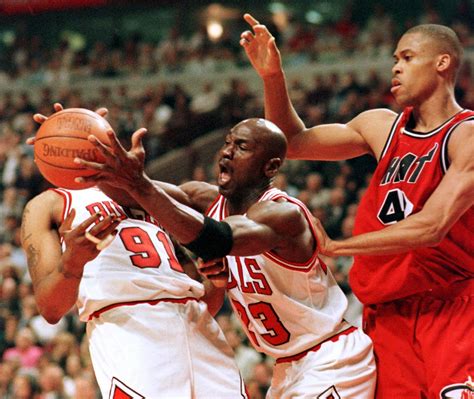
Lewis Hamilton endured a trying Canadian Grand Prix weekend, punctuated by qualifying struggles, tire degradation issues, and a bizarre incident involving a groundhog that ventured onto the track during the race, suffering a fatal encounter with his Mercedes. Hamilton described the weekend as “horrible,” highlighting the car’s performance and his personal struggles to find optimal settings.
Montreal – Lewis Hamilton’s Canadian Grand Prix proved to be a weekend of relentless challenges, culminating in a seventh-place finish overshadowed by an unusual and unfortunate on-track incident. The seven-time world champion grappled with a car that consistently underperformed, struggled with tire degradation, and experienced a moment of shock when he ran over a groundhog that had strayed onto the Circuit Gilles Villeneuve. Reflecting on the race, Hamilton described his experience as “horrible,” a sentiment echoed by the Mercedes team as they look to dissect the factors that contributed to their struggles in Montreal.
Hamilton’s weekend started on a difficult note during qualifying. The Mercedes driver failed to extract the maximum potential from his car, resulting in a less-than-ideal starting position. This setback immediately put him on the back foot, making the already challenging race even more demanding. “The car was a struggle all weekend,” Hamilton admitted post-race. “We couldn’t find the right balance, and that made it tough to push and attack.”
Adding to Hamilton’s woes was the high tire degradation experienced throughout the race. The Circuit Gilles Villeneuve, known for its abrasive surface and demanding braking zones, took a heavy toll on the tires. Hamilton, along with several other drivers, found themselves managing their tire wear carefully to avoid excessive degradation and maintain competitive lap times. “The tire degradation was higher than we anticipated,” Hamilton explained. “We had to manage the tires a lot, which compromised our pace and strategy.”
The most talked-about moment of Hamilton’s race, however, was his encounter with a groundhog. As he navigated one of the faster sections of the track, a groundhog suddenly appeared, leaving Hamilton with no time to react. The animal was struck by his car, resulting in its death. “I think I killed it,” Hamilton said somberly after the race. “It’s just… it’s horrible.” The incident, while brief, underscored the inherent dangers of racing and the unpredictable nature of motorsport events. The presence of animals on the track is not uncommon in motorsport, particularly in circuits located in more natural settings. Marshals and track officials usually do their best to keep the track clear, but incidents can occur despite their best efforts.
Hamilton’s teammate, George Russell, also faced his share of difficulties during the Canadian Grand Prix. Russell, who had shown promising pace in earlier sessions, encountered issues that hampered his progress in the race. While he managed to secure a higher finishing position than Hamilton, Russell also acknowledged the overall challenges faced by the team. “It was a tough race for everyone,” Russell commented. “We struggled with the car balance and tire degradation, and we need to understand why we weren’t as competitive as we expected.”
The Mercedes team principal, Toto Wolff, echoed the drivers’ sentiments, acknowledging the team’s shortcomings in Montreal. Wolff emphasized the need for a thorough analysis of the weekend’s performance to identify areas for improvement. “This weekend was a reminder that we still have work to do,” Wolff stated. “We need to understand why we struggled with the car balance and tire degradation, and we need to find solutions to improve our performance in the upcoming races.”
The Canadian Grand Prix, won by Max Verstappen of Red Bull Racing, highlighted the competitive nature of Formula 1 and the relentless pursuit of performance by all teams. Verstappen’s victory further solidified Red Bull’s dominance in the current season, while other teams, including Mercedes, continue to strive to close the gap.
Hamilton’s “horrible” weekend serves as a stark reminder of the challenges and complexities of Formula 1. The sport demands precision, adaptability, and resilience, and even the most seasoned drivers can face setbacks. As Hamilton and the Mercedes team look ahead, they will undoubtedly focus on addressing the issues that plagued them in Montreal and strive to return to their competitive form in the upcoming races. The incident with the groundhog, while unfortunate, adds an additional layer of complexity to an already challenging weekend, underscoring the unpredictable nature of motorsport and the importance of safety for both drivers and animals.
Beyond the immediate challenges of the Canadian Grand Prix, the incident involving the groundhog raises broader questions about track safety and wildlife management in motorsport events. Circuits located near natural habitats often face the challenge of preventing animals from entering the track, and various measures are typically in place to mitigate this risk. These measures can include fencing, animal deterrents, and increased vigilance from track marshals. However, as Hamilton’s experience demonstrates, these measures are not always foolproof, and incidents can still occur.
The FIA, the governing body of Formula 1, has strict safety regulations in place for all circuits hosting races. These regulations cover a wide range of aspects, including track design, barrier placement, and emergency response protocols. However, the specific measures taken to prevent animals from entering the track can vary depending on the location and characteristics of the circuit. Some circuits may employ specialized animal control teams, while others rely on more basic deterrents and surveillance.
The incident involving Hamilton and the groundhog also highlights the ethical considerations surrounding motorsport events and their impact on the environment. While Formula 1 has made efforts to improve its sustainability and reduce its carbon footprint, the sport still faces criticism for its environmental impact. The presence of animals on the track is a reminder that motorsport events can have unintended consequences for wildlife and ecosystems.
In the aftermath of the Canadian Grand Prix, there may be calls for a review of track safety measures to prevent similar incidents from occurring in the future. This review could involve an assessment of existing fencing, the implementation of additional animal deterrents, and enhanced training for track marshals. The FIA may also consider developing more specific guidelines for wildlife management at circuits located near natural habitats.
For Lewis Hamilton, the Canadian Grand Prix was a weekend to forget. The combination of car performance issues, tire degradation challenges, and the unfortunate incident with the groundhog created a perfect storm of adversity. However, Hamilton is known for his resilience and determination, and he will undoubtedly use this experience as motivation to bounce back stronger in the upcoming races. As he stated after the race, “We’ll keep pushing, we’ll keep fighting, and we’ll come back stronger.”
The broader implications of the Canadian Grand Prix extend beyond the immediate results of the race. The challenges faced by Mercedes highlight the competitive nature of Formula 1 and the constant need for improvement. The incident involving the groundhog underscores the importance of track safety and wildlife management. And the overall event serves as a reminder of the complex relationship between motorsport and the environment.
Expanded Context and Analysis:
Lewis Hamilton’s candid assessment of his Canadian Grand Prix experience as “horrible” speaks volumes about the challenges he faced throughout the weekend. His struggles were multifaceted, encompassing car performance, tire management, and the unforeseen incident with the groundhog. Each of these elements contributed to a disappointing result for the seven-time world champion.
The underperforming Mercedes car was a significant factor in Hamilton’s struggles. The team has been working tirelessly to improve the car’s competitiveness, but they have yet to consistently challenge the frontrunners. Hamilton’s inability to find the right balance and extract the maximum potential from the car left him frustrated and unable to push to his full capabilities.
Tire degradation, a common challenge in Formula 1, was particularly pronounced at the Circuit Gilles Villeneuve. The abrasive track surface and demanding braking zones placed a heavy burden on the tires, forcing drivers to manage their wear carefully. Hamilton’s struggle with tire degradation further hampered his pace and strategic options. The need to conserve tires meant he couldn’t push as hard as he would have liked, ultimately compromising his overall performance.
The incident with the groundhog added an unexpected and unsettling dimension to Hamilton’s race. While such incidents are rare, they underscore the inherent risks of motorsport and the potential for unforeseen events to impact a driver’s performance. Hamilton’s reaction to the incident – expressing his horror and concern for the animal – reflects his empathy and sportsmanship. It also highlights the emotional toll that such events can take on drivers, who are already under immense pressure to perform at their best.
From a broader perspective, the Canadian Grand Prix highlighted the intense competition in Formula 1 and the relentless pursuit of performance by all teams. Red Bull’s continued dominance underscores their engineering prowess and strategic acumen. Other teams, including Mercedes, are working tirelessly to close the gap, but they face significant challenges. The complex interplay of car development, driver skill, and strategic decision-making makes Formula 1 a highly demanding and unpredictable sport.
The incident with the groundhog also raises important questions about track safety and wildlife management. While motorsport circuits typically have measures in place to prevent animals from entering the track, these measures are not always foolproof. The FIA, as the governing body of Formula 1, has a responsibility to ensure the safety of drivers, spectators, and animals. A review of track safety protocols may be warranted to identify areas for improvement and prevent similar incidents from occurring in the future.
Furthermore, the Canadian Grand Prix serves as a reminder of the environmental impact of motorsport events. While Formula 1 has made efforts to improve its sustainability, the sport still faces criticism for its carbon footprint and other environmental concerns. The presence of animals on the track is a reminder that motorsport events can have unintended consequences for wildlife and ecosystems. Balancing the excitement and spectacle of motorsport with environmental responsibility is an ongoing challenge.
In conclusion, Lewis Hamilton’s “horrible” weekend at the Canadian Grand Prix was a confluence of factors, including car performance issues, tire degradation challenges, and the unfortunate incident with the groundhog. These challenges underscore the complexities of Formula 1 and the importance of adaptability, resilience, and a commitment to continuous improvement. The incident with the groundhog also highlights the broader issues of track safety, wildlife management, and environmental responsibility in motorsport. As Hamilton and the Mercedes team look ahead, they will undoubtedly focus on addressing the issues that plagued them in Montreal and strive to return to their competitive form in the upcoming races.
Further Analysis:
Diving deeper into each aspect of Hamilton’s challenging weekend reveals more nuanced insights. Regarding the car’s performance, the Mercedes W15 has shown flashes of potential throughout the season, but its inconsistency remains a persistent issue. The car’s sensitivity to track conditions and aerodynamic configurations makes it difficult to optimize its performance consistently. In Montreal, the team struggled to find the right balance between downforce and drag, which affected both straight-line speed and cornering grip. This lack of a stable platform made it challenging for Hamilton to extract the maximum performance from the car.
The tire degradation issues were exacerbated by the Circuit Gilles Villeneuve’s characteristics. The track’s high-speed corners and heavy braking zones subject the tires to significant stress, leading to increased wear and degradation. Pirelli, the official tire supplier for Formula 1, brought a range of compounds to the Canadian Grand Prix, but even the harder compounds struggled to withstand the demands of the track. Hamilton’s driving style, known for its smoothness and precision, typically helps to mitigate tire degradation, but even he struggled to manage the wear effectively in Montreal.
The psychological impact of the groundhog incident should not be underestimated. While Hamilton has faced numerous challenges throughout his career, this particular incident was unique and unsettling. The sudden appearance of the animal on the track and the unavoidable collision would have undoubtedly been a traumatic experience. Drivers often talk about the importance of maintaining focus and concentration during a race, and such an incident could easily disrupt a driver’s mental state. Hamilton’s ability to continue racing after the incident is a testament to his mental fortitude, but it is likely that the experience lingered in his mind for the remainder of the race.
The strategic implications of the Canadian Grand Prix are also noteworthy. The high tire degradation forced teams to make difficult decisions about their pit stop strategies. Some teams opted for a more aggressive strategy, making multiple pit stops to minimize tire wear, while others tried to extend their stints to gain track position. Mercedes’ strategy for Hamilton was somewhat conservative, and it did not appear to maximize his potential. A more aggressive strategy might have yielded a better result, but it would have also carried greater risk.
Looking ahead, Mercedes faces a critical period of development and evaluation. The team needs to address the underlying issues with the W15 and find ways to improve its consistency and competitiveness. This will require a concerted effort from engineers, designers, and drivers, working together to identify areas for improvement and implement effective solutions. The team also needs to refine its strategic decision-making process to ensure that it is making the most of every opportunity.
For Lewis Hamilton, the focus will be on putting the Canadian Grand Prix behind him and preparing for the upcoming races. He will undoubtedly analyze his performance in Montreal and identify areas where he can improve. He will also work closely with the team to ensure that the car is optimized for each track. Hamilton’s experience and talent are undeniable, and he remains a formidable competitor. Despite the challenges he faced in Montreal, he is capable of bouncing back and achieving success in the future.
FAQ Section:
Q1: What specifically made Lewis Hamilton describe the Canadian Grand Prix as “horrible”?
A: Hamilton used the term “horrible” to describe his overall experience at the Canadian Grand Prix due to a combination of factors. These included struggles with the car’s performance, significant tire degradation throughout the race, and the distressing incident where he ran over a groundhog on the track. He felt he couldn’t find the right balance with the car, which hindered his ability to push and attack, and the tire issues further compromised his pace and strategy.
Q2: What exactly happened with the groundhog incident during the race?
A: During the race, a groundhog unexpectedly appeared on the track in front of Lewis Hamilton’s car. With little to no time to react, Hamilton’s car struck the animal. Sadly, the groundhog did not survive. Hamilton expressed his distress over the incident after the race, calling it “horrible.”
Q3: Beyond the groundhog incident, what challenges did Mercedes face during the Canadian Grand Prix?
A: Mercedes struggled with multiple issues throughout the Canadian Grand Prix weekend. Firstly, they had difficulty finding the optimal car setup, which impacted their overall performance. Secondly, both Hamilton and George Russell experienced higher-than-anticipated tire degradation, forcing them to manage their pace and compromising their strategic options.
Q4: What are some of the standard safety measures in place at F1 circuits to prevent incidents involving animals?
A: F1 circuits typically employ a variety of safety measures to prevent animals from entering the track. These can include fencing around the perimeter of the circuit, the use of animal deterrents such as ultrasonic devices or scent-based repellents, and increased vigilance from track marshals who are responsible for monitoring the track and surrounding areas for potential hazards. Some circuits also have specialized animal control teams that are trained to safely remove animals from the track if they manage to get onto it.
Q5: What are the potential long-term implications of the incident involving Lewis Hamilton and the groundhog for track safety and wildlife management in Formula 1?
A: The incident involving Lewis Hamilton and the groundhog could lead to a re-evaluation of track safety measures and wildlife management protocols at Formula 1 circuits. The FIA may conduct a review of existing procedures to identify areas for improvement, such as enhancing fencing, implementing additional animal deterrents, and providing enhanced training for track marshals. The incident also highlights the broader ethical considerations surrounding motorsport events and their impact on the environment, potentially leading to increased scrutiny of sustainability efforts and a greater emphasis on minimizing the risk to wildlife.
Concluding Summary:
Lewis Hamilton’s Canadian Grand Prix was a weekend marred by challenges, including struggles with car performance, tire degradation, and the unfortunate incident involving a groundhog. Describing the weekend as “horrible,” Hamilton’s experience underscores the unpredictable nature of motorsport and the constant pursuit of improvement in Formula 1. The incident also raises important questions about track safety, wildlife management, and the environmental impact of racing events. While the Canadian Grand Prix proved to be a setback for Hamilton and Mercedes, they will undoubtedly learn from the experience and strive to return to their competitive form in the upcoming races. The broader implications of the event highlight the ongoing need for vigilance and continuous improvement in all aspects of Formula 1, from car development to safety protocols and environmental sustainability.








